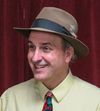Telenews Theatre
San Francisco had an all-news theater from 1939 to 1967. Admission gave you the whole world and a quiet retreat from the same.
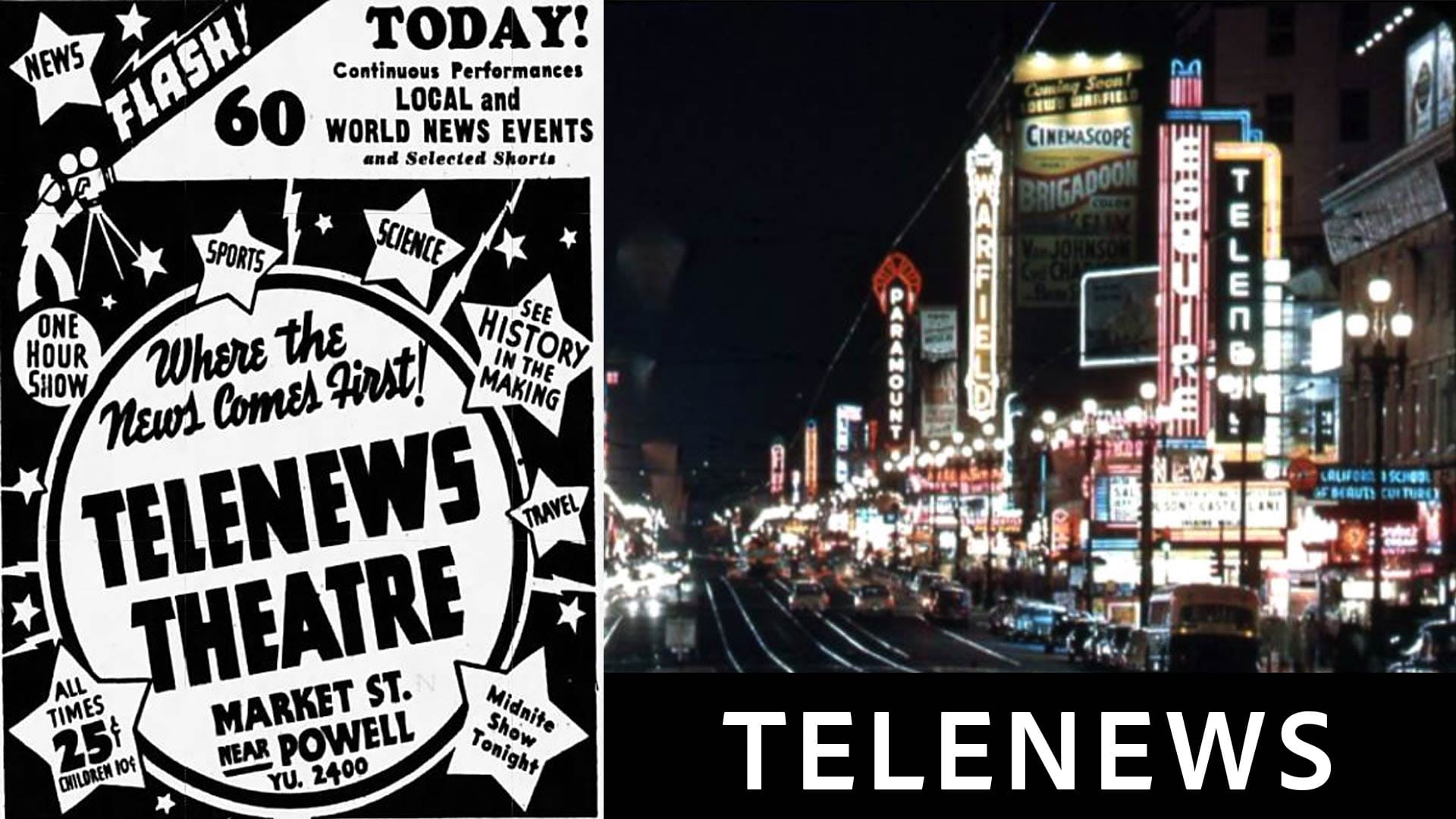
You want to kill 3 minutes of time between tasks. Then, somehow, two hours dully pass and your elbow hurts from the tiny manipulations required by your scrolling thumb.
The social media companies figured it out (at least for now).
Forget vacation photos from your friends or opinion-sharing or learned conversation.
What keeps people spending time online are short videos, “reels,” TikToks: cats talking, free-kick soccer goals, terrible Phil Silvers jokes from 1970s Friars Club roasts, boxing knock-outs, time-lapsed restorations of toy cars being restored, Indonesian street chefs cutting exotic fruits with giant sharp blades...
(Now you know too much about my personal algorithm.)
There was a 1939 version of today’s reels, but you had to leave the house and get yourself to Market and Powell Streets.
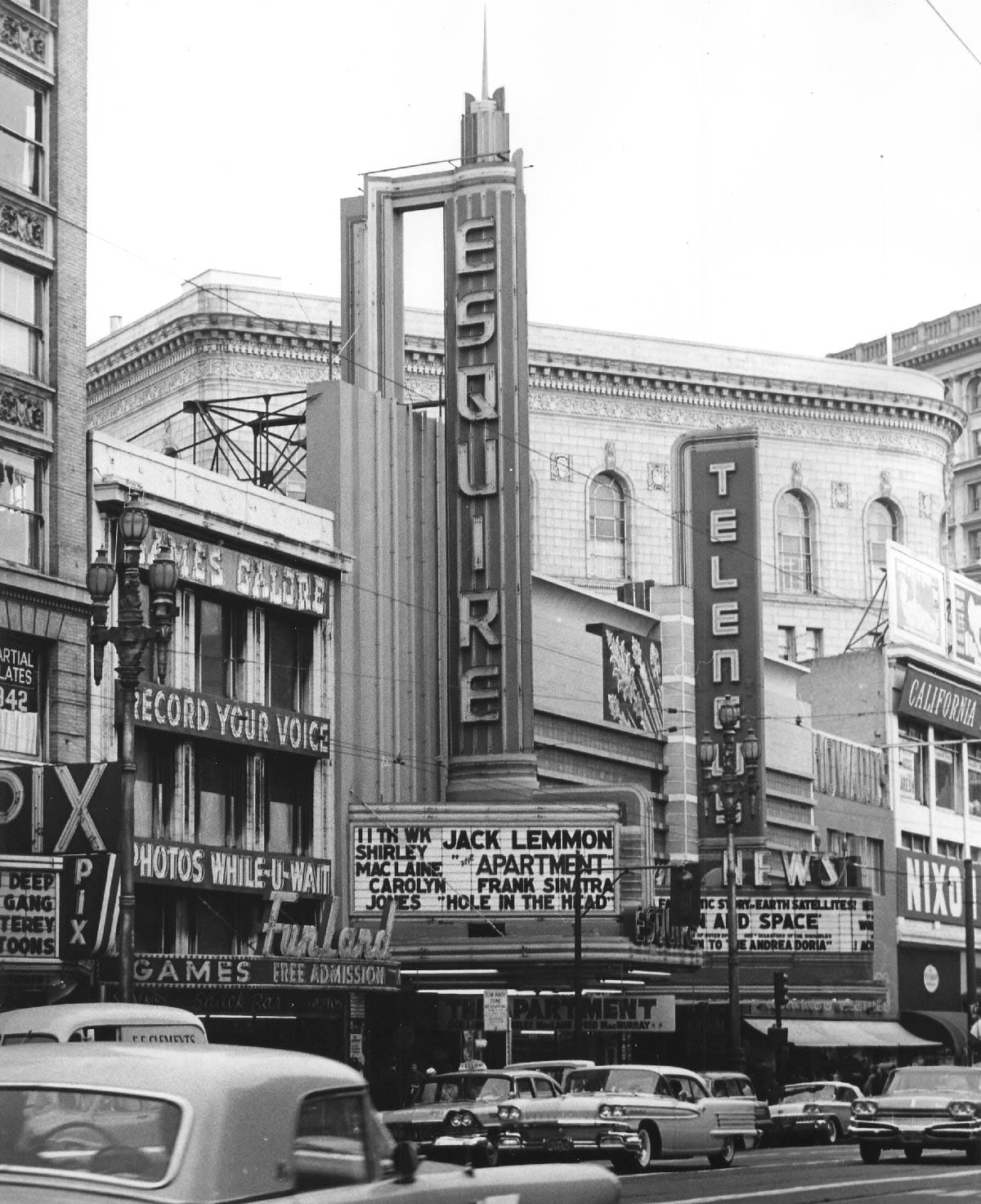
Movies in Multitude
You may know that motion pictures were the primary form of entertainment between the World Wars. In the late 1940s, 90 million Americans, almost two-thirds of the population, went to the movies at least once a week.
In 1950, San Francisco had 26 theaters just downtown.
Six big ones were affiliated with major studios—the Golden Gate, the Fox, United Artists, the Warfield, the Orpheum, and the Paramount—and showed exclusive new releases. These “movie palaces” had an average capacity of 2,742 seats. The Fox could hold a staggering 4,651 patrons.
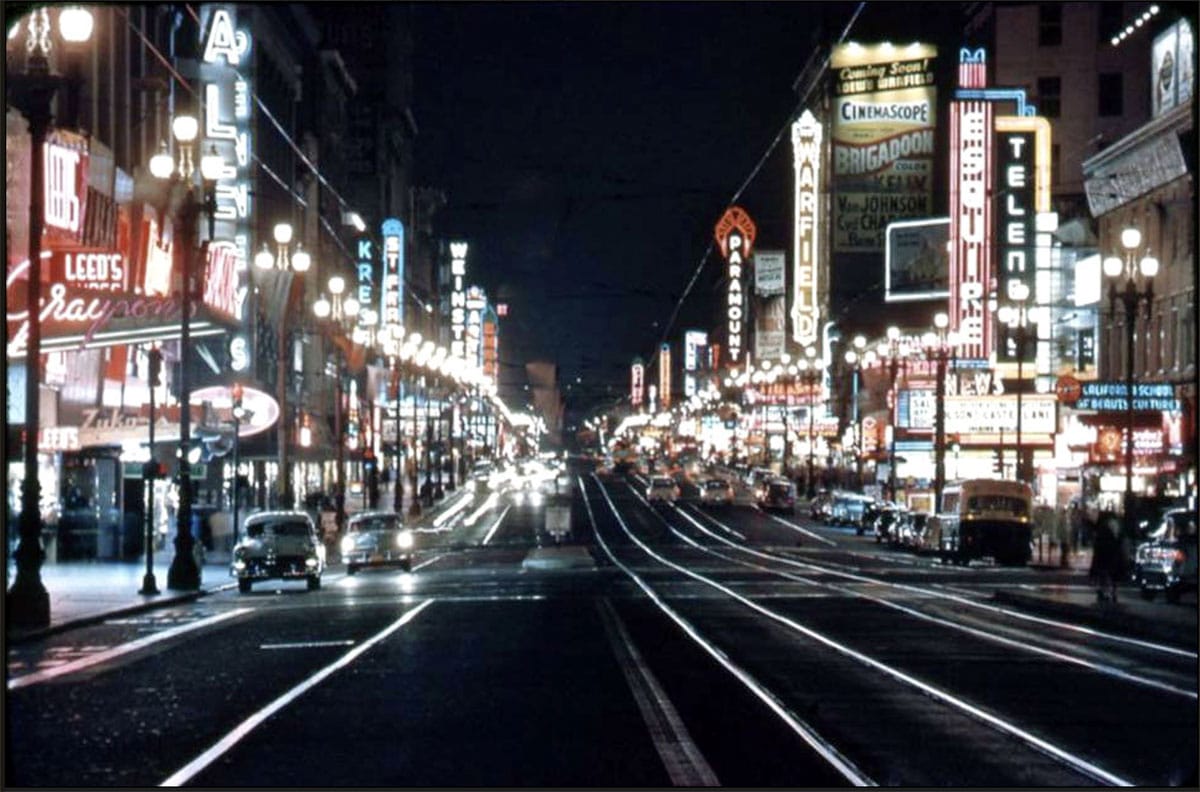
There was a constellation of smaller venues, such as the Cinema, Esquire, Alcazar, State, and St. Francis, showing slightly staler or less prestigious fare.
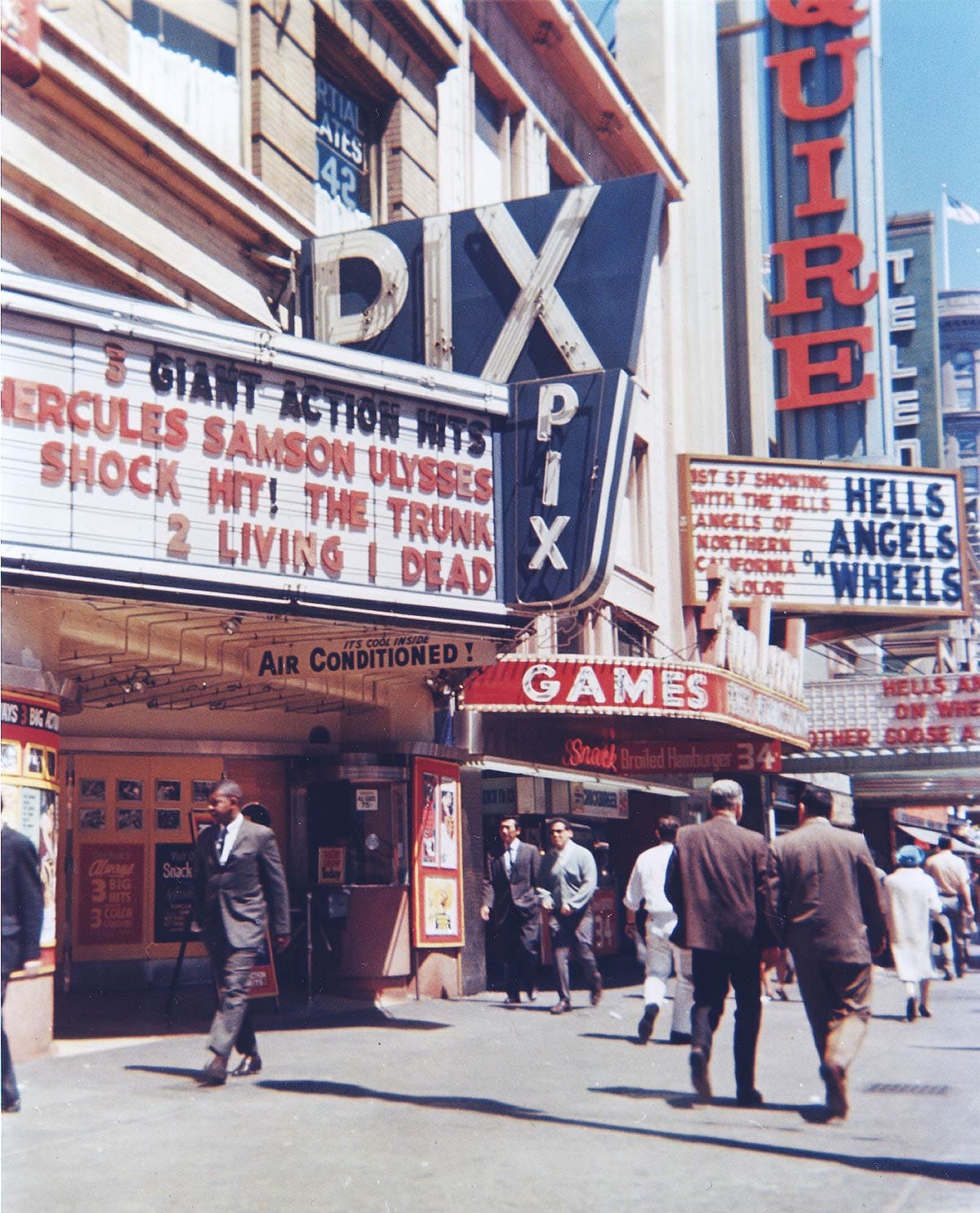
Lastly, there were scrappy independent venues holding at most 600-700 people. These screened truly old or sensational movies padded with cartoons and Three Stooges shorts, and ran occasional BINGO games and other promotions to bring in the people.
Some occupied specific niches or themes. Movies played at one of these “entrepreneurial” theaters for just a day or two.
The Stage Door showed art house fare from Great Britain. The Round-Up offered nothing but Westerns. The Powell showed cerebral biopics, smart comedies, classy dramas. The Regal had a lot of World War II movies you’ve never heard of. The Silver Palace ran endless Blondie films—the movie version of what television sitcoms would become, a series of 28 movies produced over 12 years.
Into this specialty niche category, the Telenews Theatre was born in 1939.
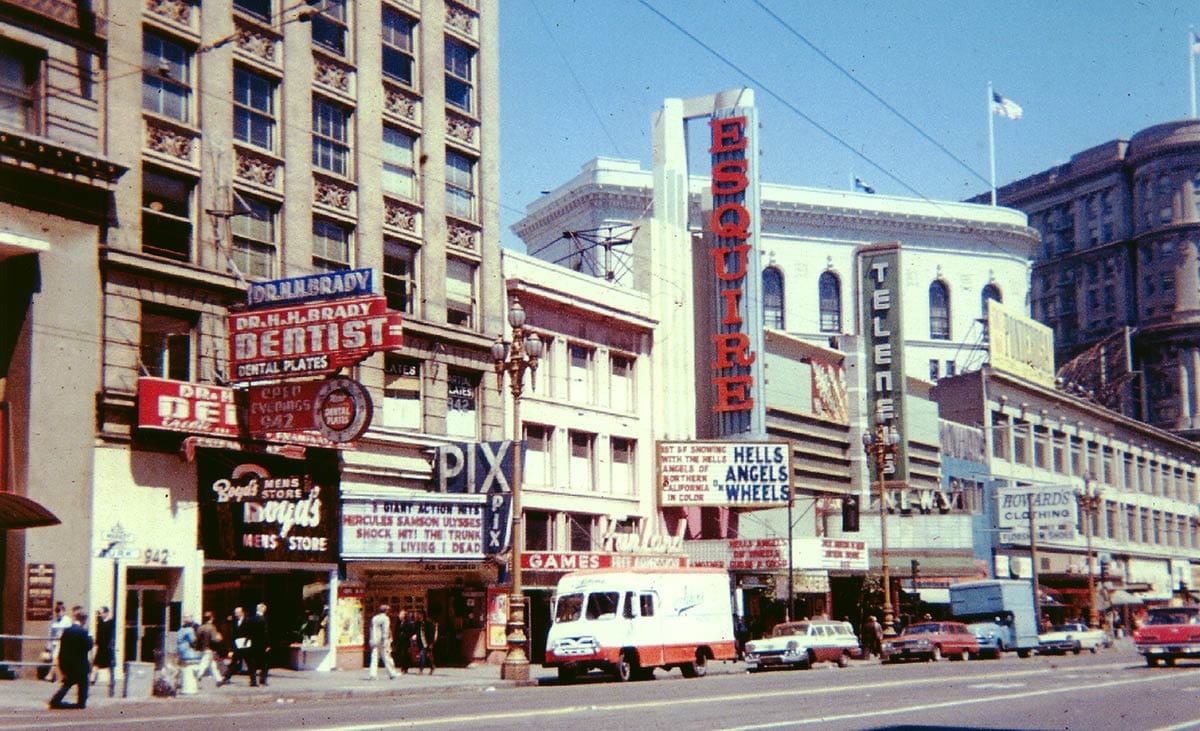
Newsreels were main-feature appetizers and part of the movie-going experience for most of the 20th century. Five major companies created these cinematic round-ups of war, weather events, travelogues, and beauty pageants.
They were the nightly news before television news broadcasts took over.
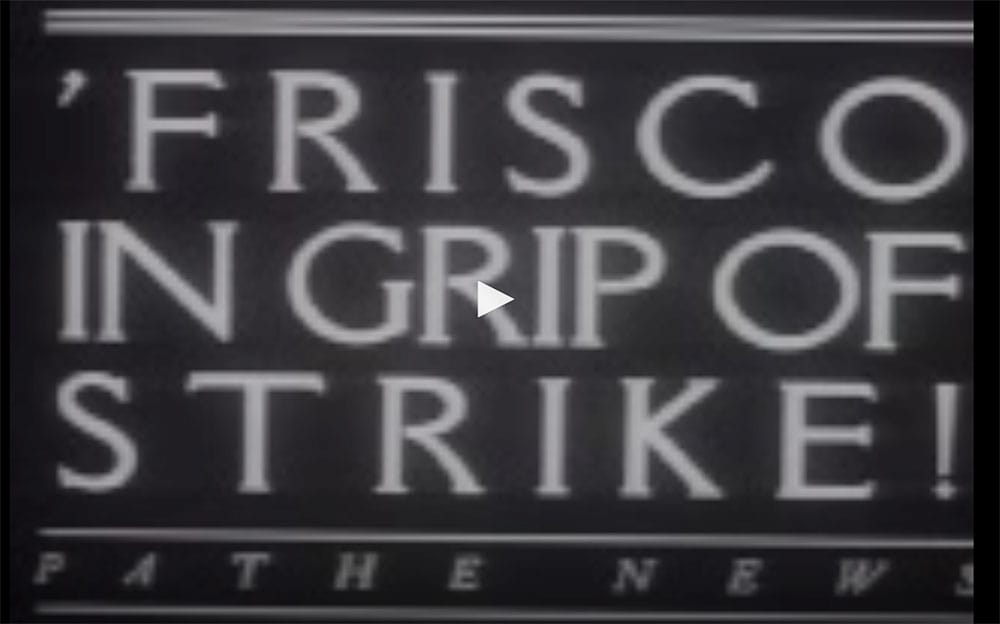
And they also had the slice-of-life stuff, the “this dog can roller-skate!” stories.
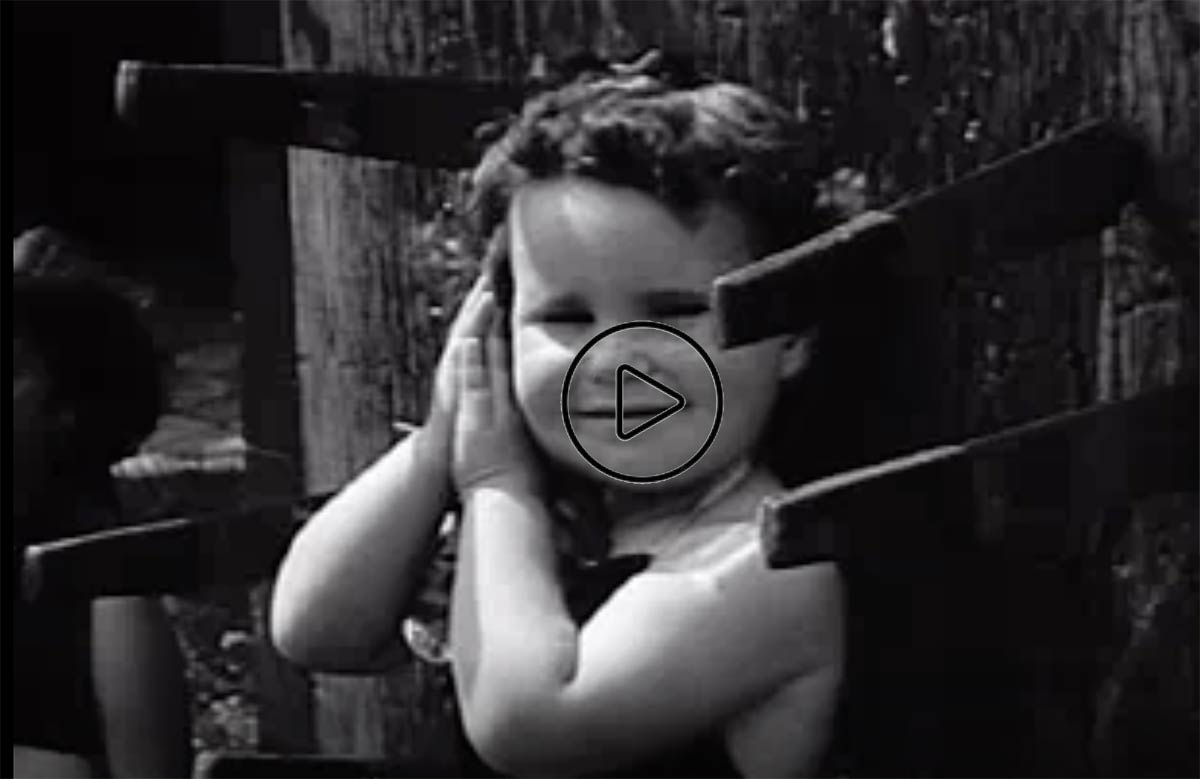
A syndicate in New York had an idea: what if we had theatres showing nothing but newsreels?
The CNN of its Time
Thirteen all-newsreel theatres were eventually opened across the country.
In San Francisco, an old billiard hall at 930 Market Street between Powell and Mason Streets—a prime location for foot traffic—was adapted for the Telenews. The vertical sign had a sleek sans-serif font somewhat resembling copy from a teletype machine. There were 399 seats for news-hungry patrons.
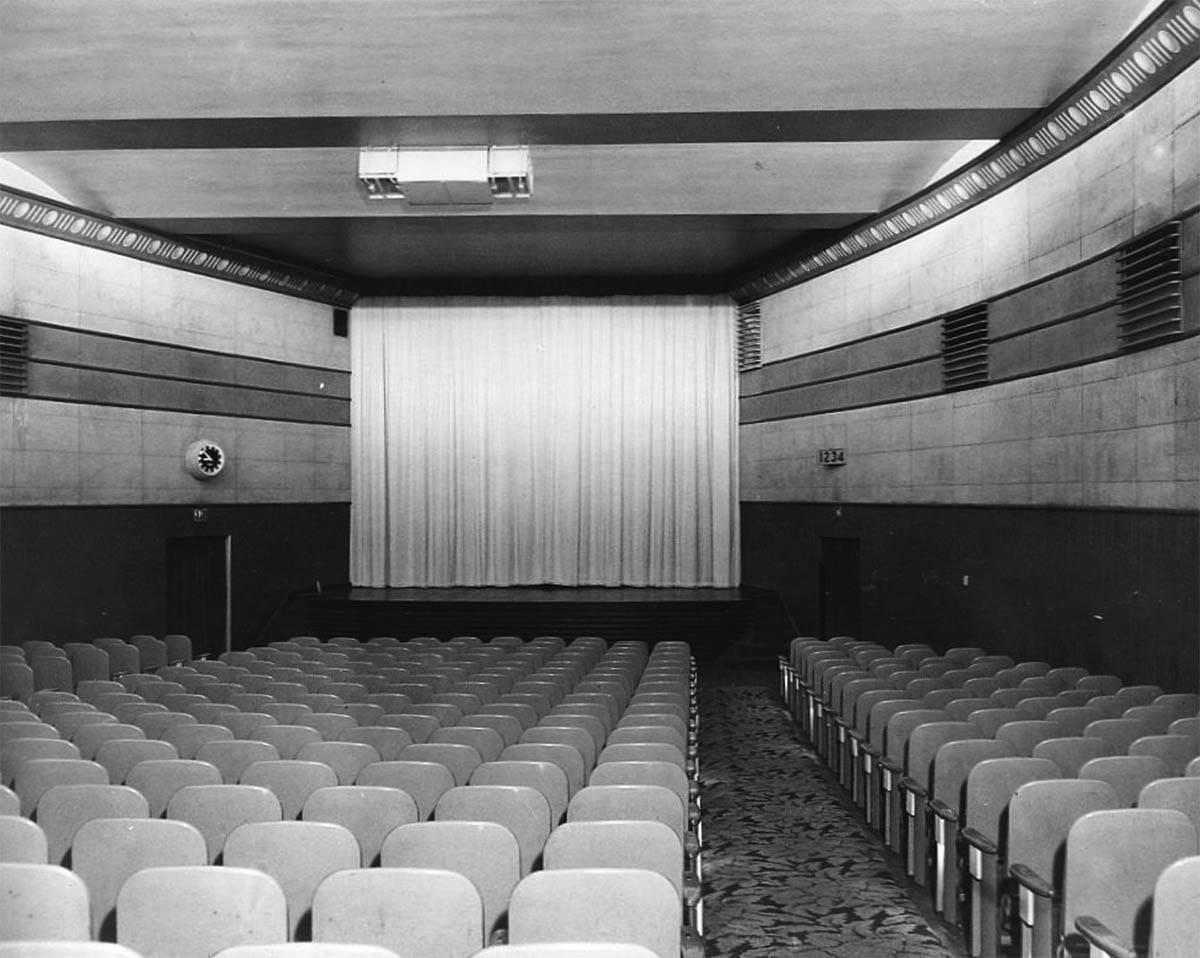
Opening day was September 2, 1939. There was definitely an audience interested in the latest news. Nazi Germany had invaded Poland the day before. World War II had begun.
The interior was no frills, but the lit-up entry was an ever-changing flytrap of headline signs, photos, and maps to lure in the passerby.
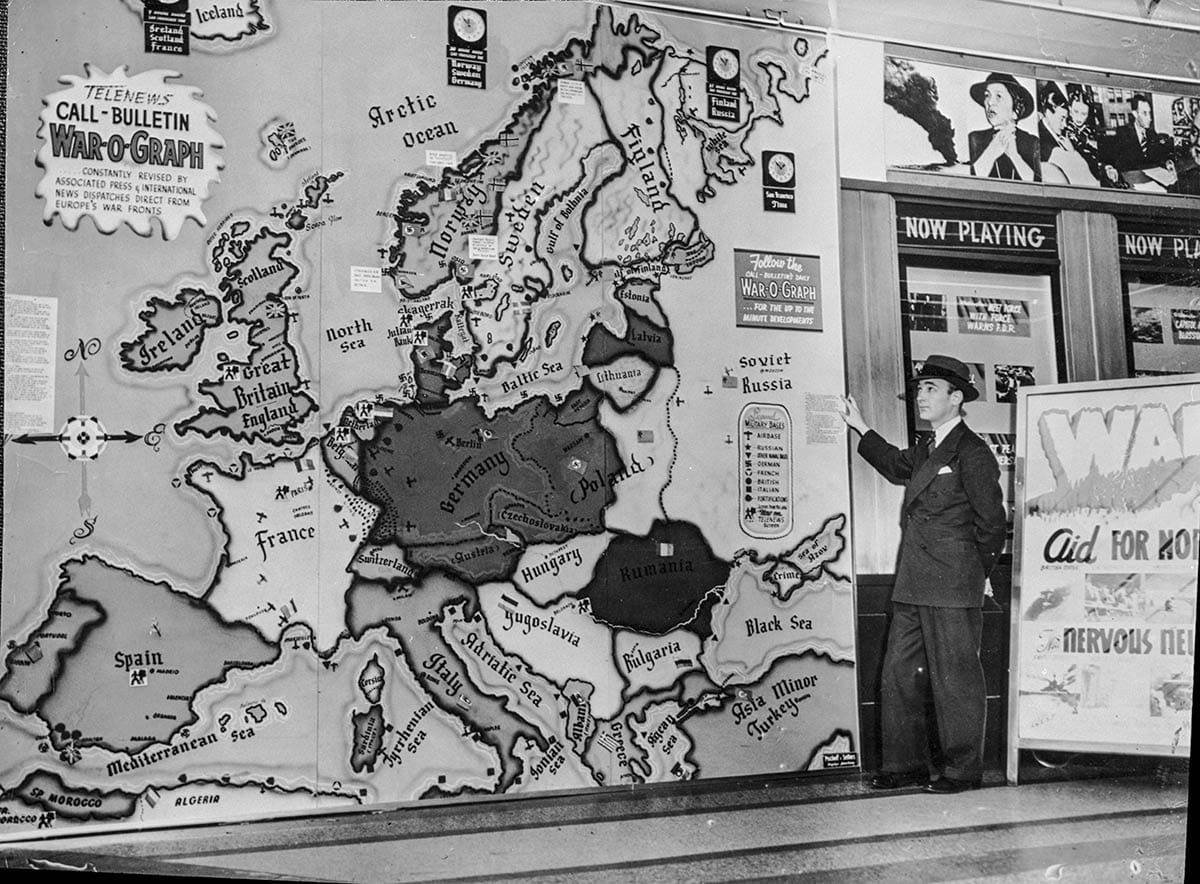
In addition to all the great sign-painting, broadsides, and lights, there was occasionally an eye-catching prop. How many times has Market Street hosted a stuffed polar bear?
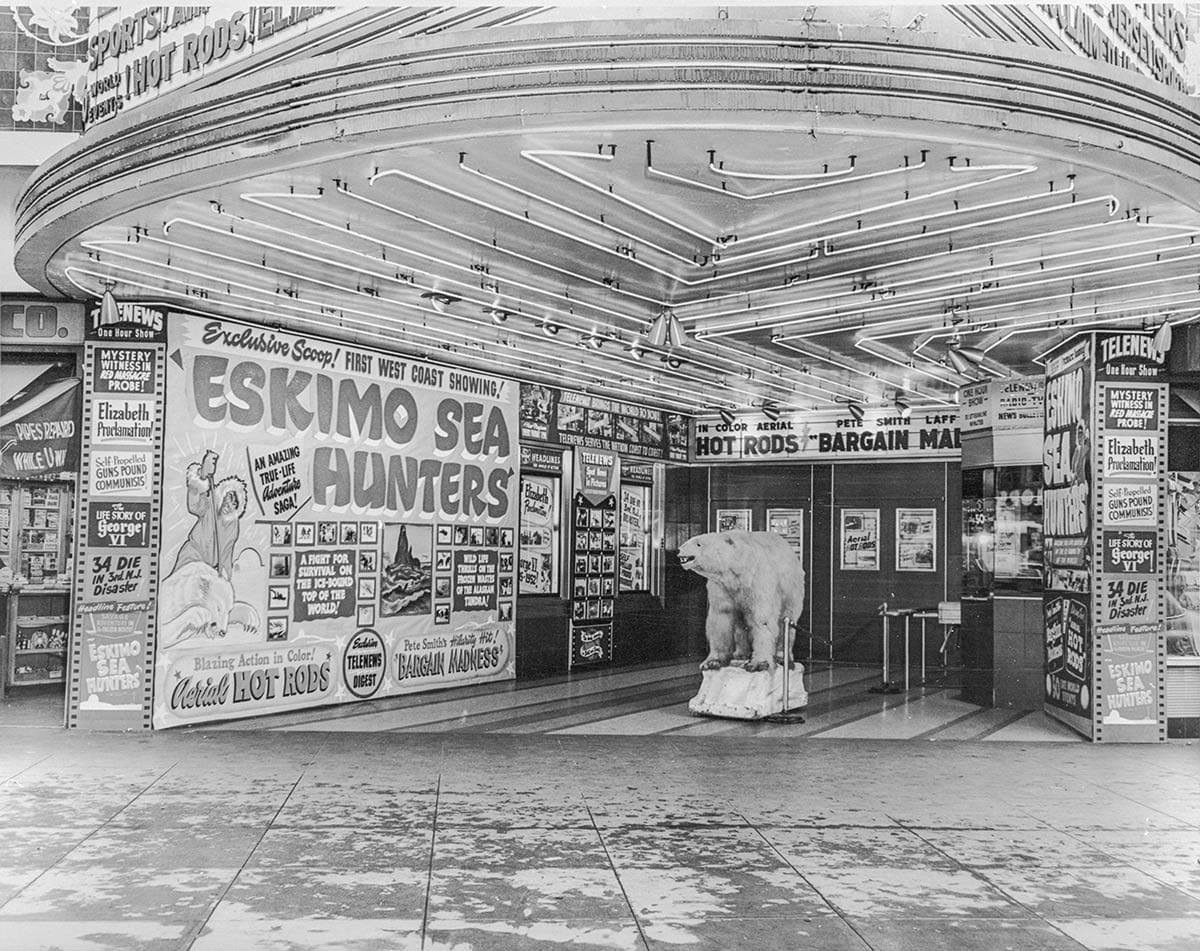
Despite the entryway’s riotous color, all-caps signage, and surfeit of exclamation points, Telenews fare was fairly educational.
An hour in the Telenews would give you segments on the natural world, profiles of important figures, and features both geographical and anthropological. Each visit was a 60-minute dip into an inexhaustible filmic encyclopedia.
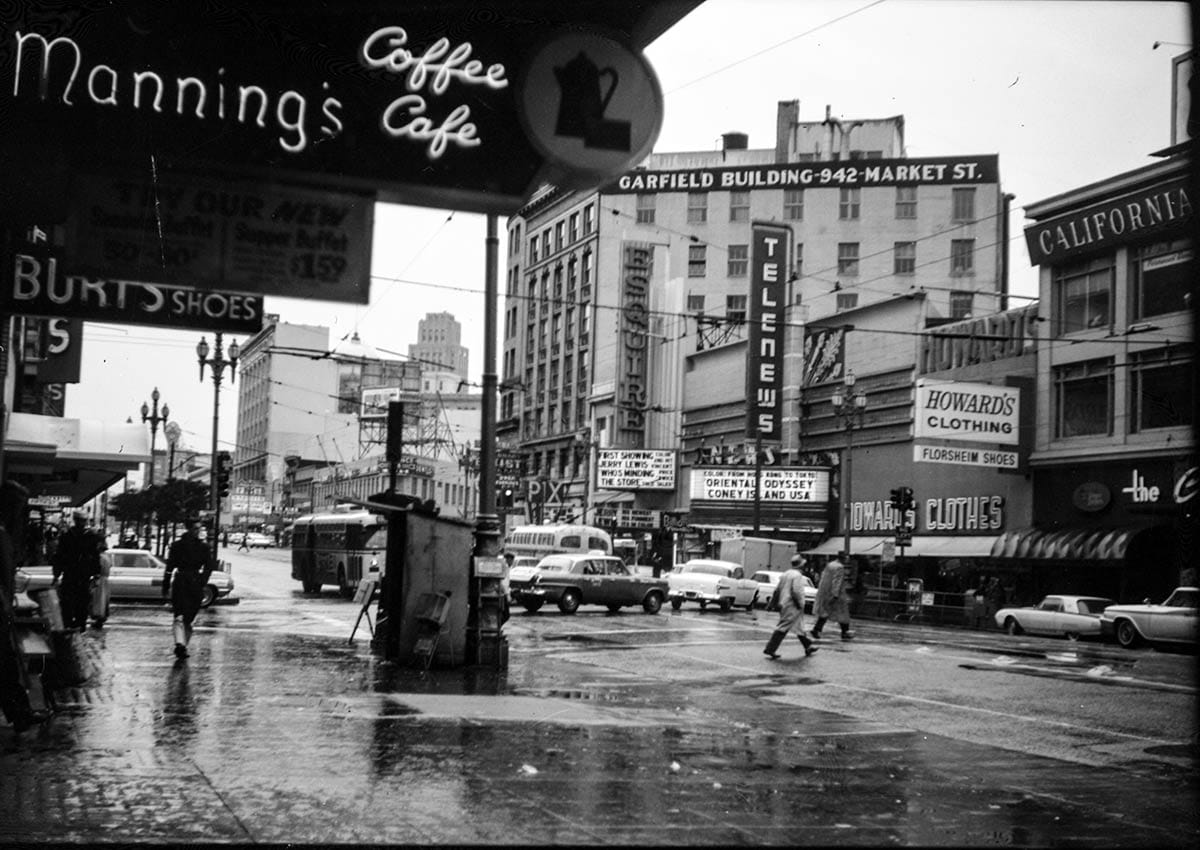
Changing the marquee lettering must have been the most exhausting job to have at the theater.
How do you sum up ever-changing one-hour shows which might feature troop offensives in Russia, hurricane damage in Louisiana, a religious ceremony in Singapore, and knife-throwing mothers?
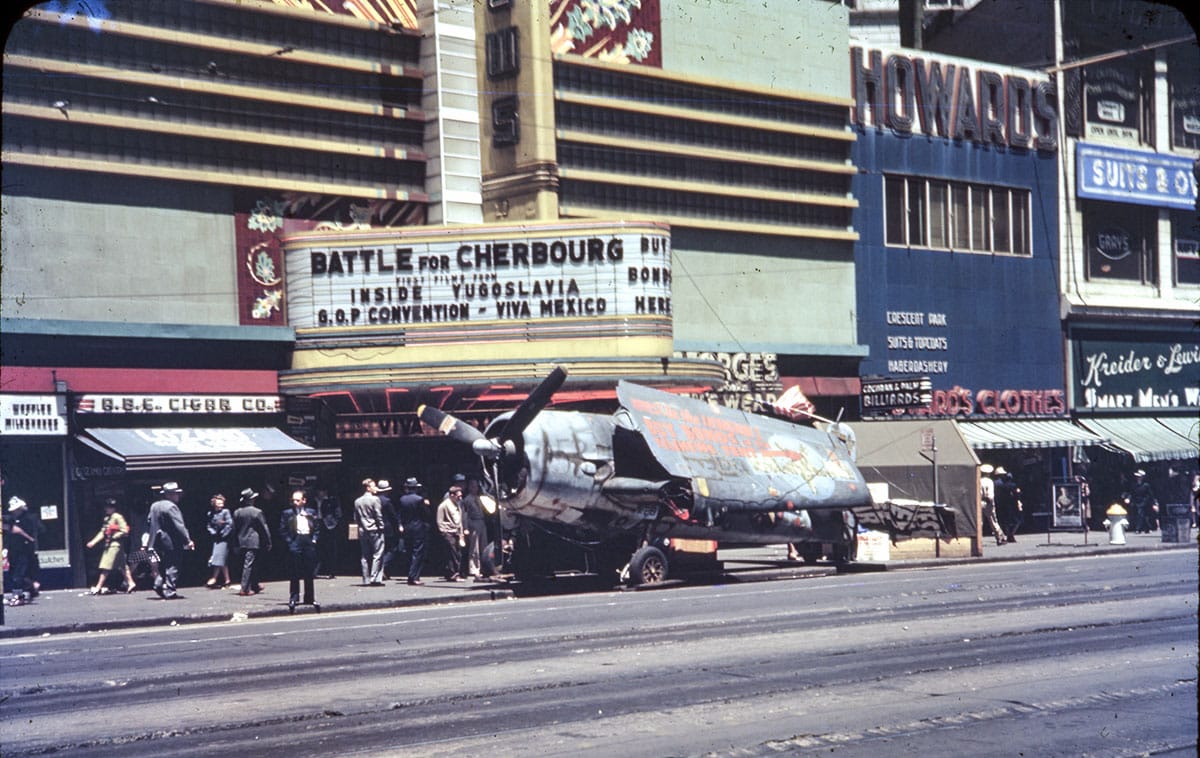
Beyond information and entertainment, the Telenews filled a need eloquently described by Ralph Craib of the San Francisco Chronicle:
“[I]t was an oasis for the weary and the waiting of the city, where one could, for a quarter in 1939 and for a buck in 1967, leave the city street behind, sink into darkness and a push-back seat and be carried off to a war, a political campaign, the icy Arctic or a palm-fringed island and girls with palm-fringed skirts.”
It sounds familiar, an escape-desire now fulfilled through a habitual, reflexive reach for our phones—the personalized Telenews Theatres in our pockets.
The Telenews closed in 1967, its building demolished to make way for Hallidie Plaza, the Powell Street BART/Metro station, and the new connector street, Cyril Magnin Street.
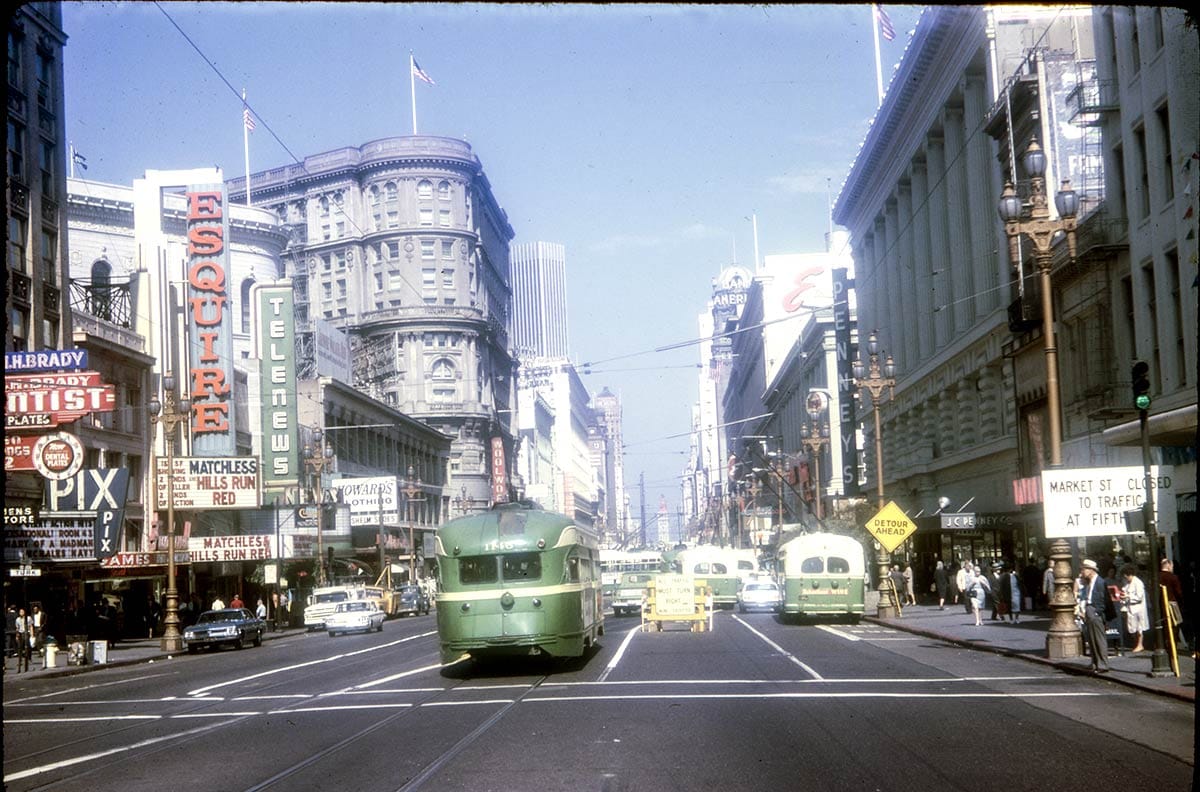
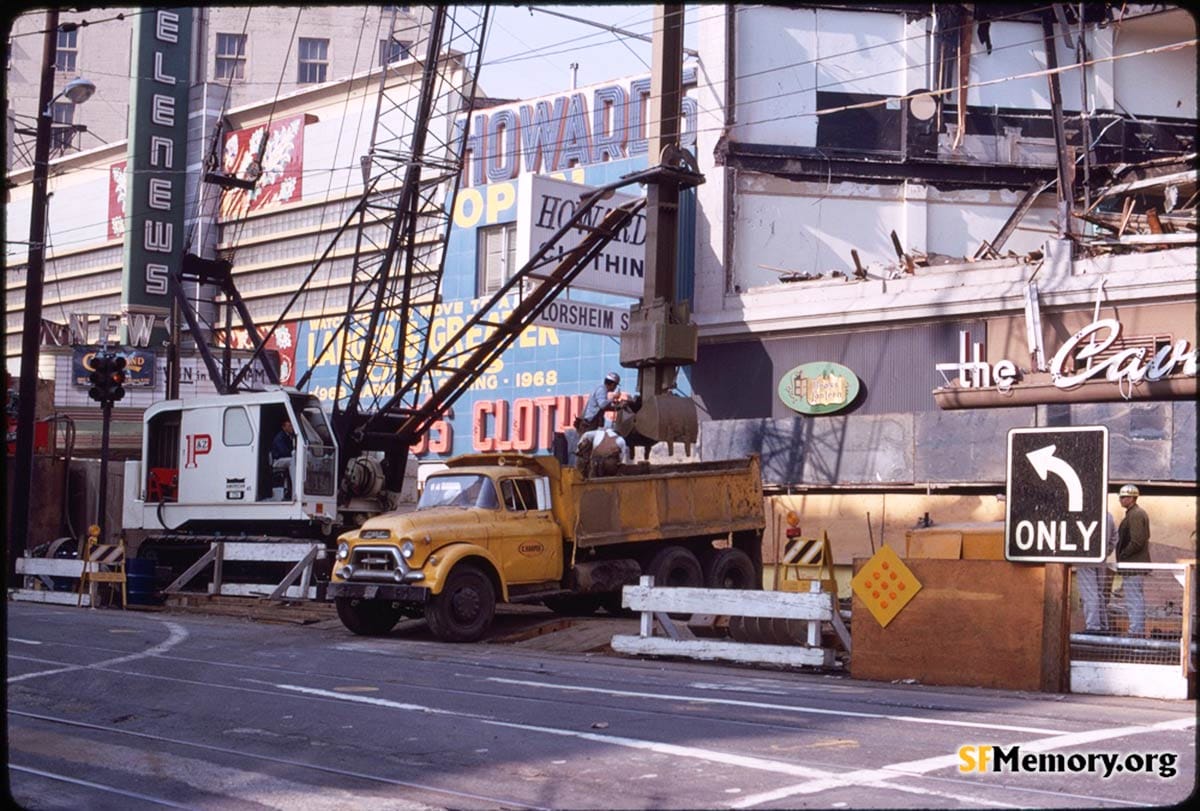
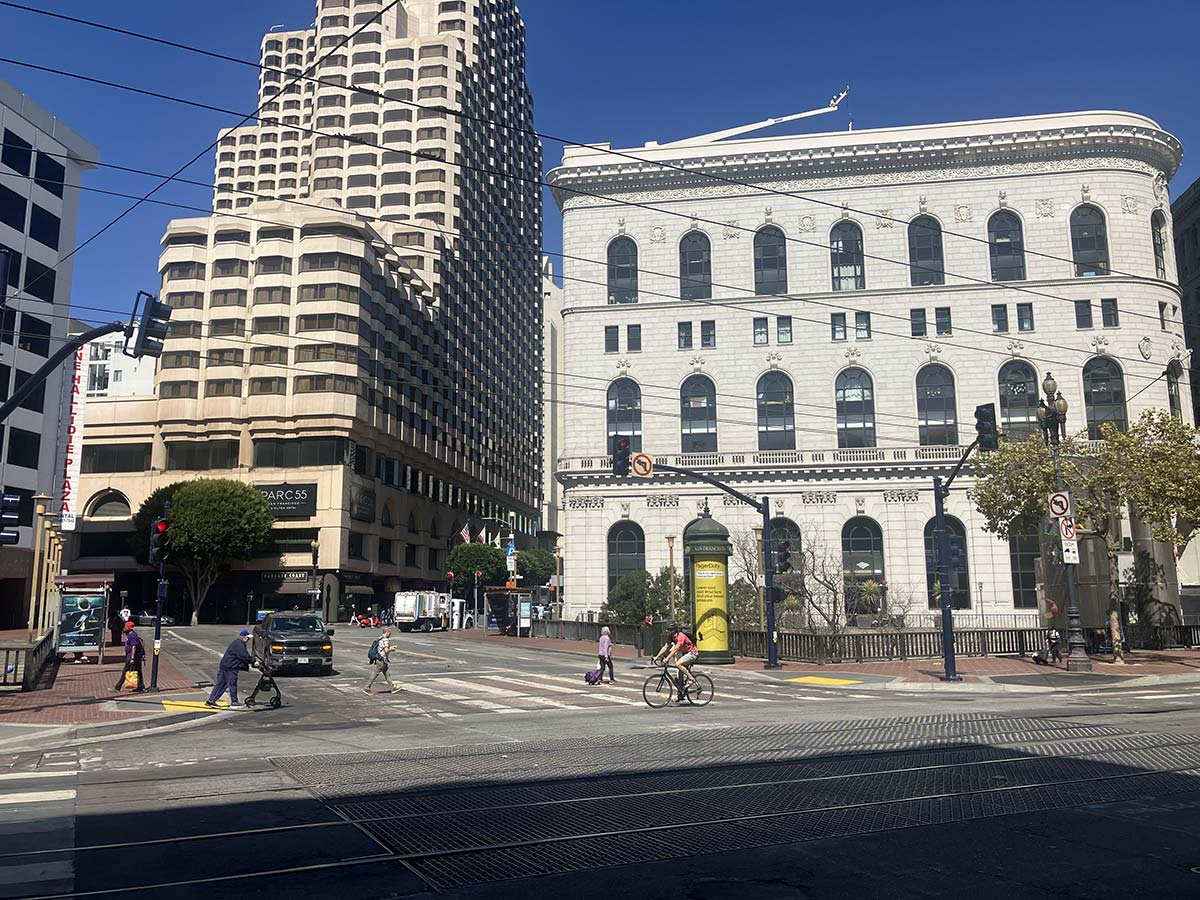
BART or no BART, the Telenews probably wouldn’t have lasted much longer.
The era of Market Street movies was nearing the end, cored out by the creation of the suburbs and a ubiquitous technology newer than movies and perfect for short features and news segments.
The last week of the Telenews, KTVU reporter Carlton Cordell interviewed patrons and asked one gentleman what he would do now that the theatre was closing.
“Look at TV, I guess.”
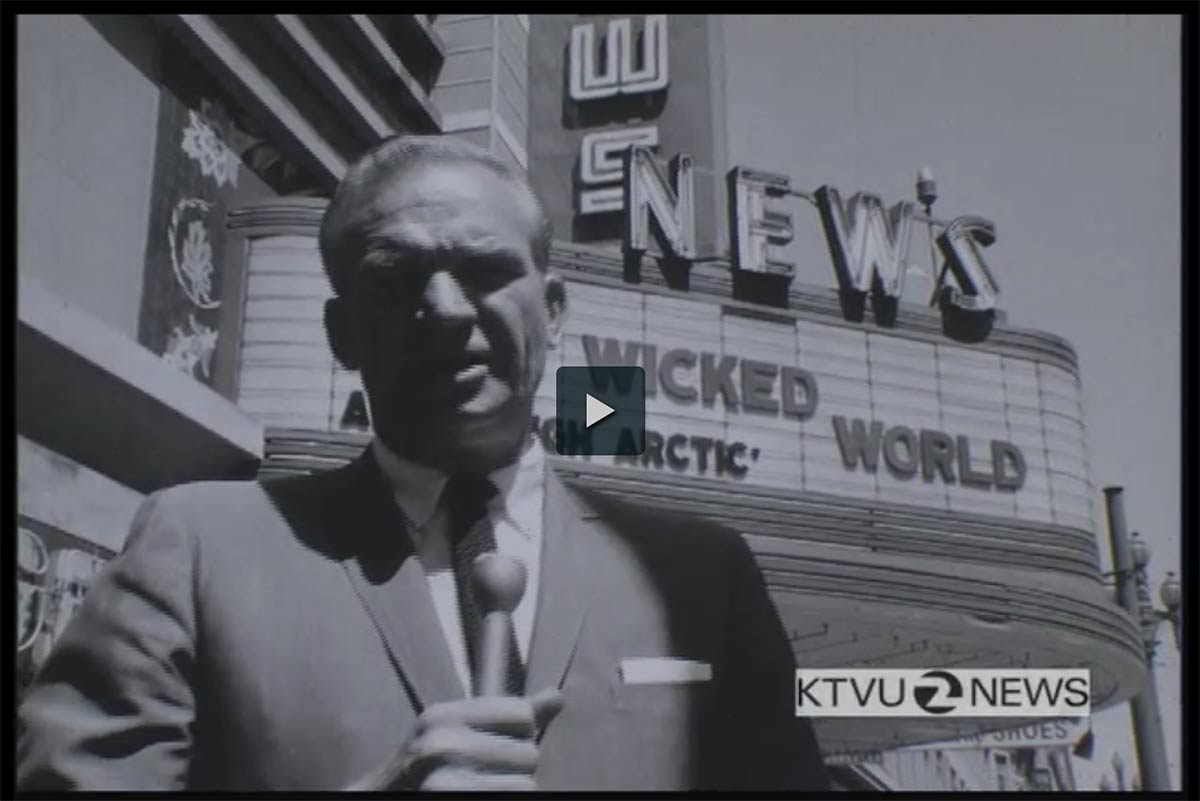
Woody Beer and Coffee Fund
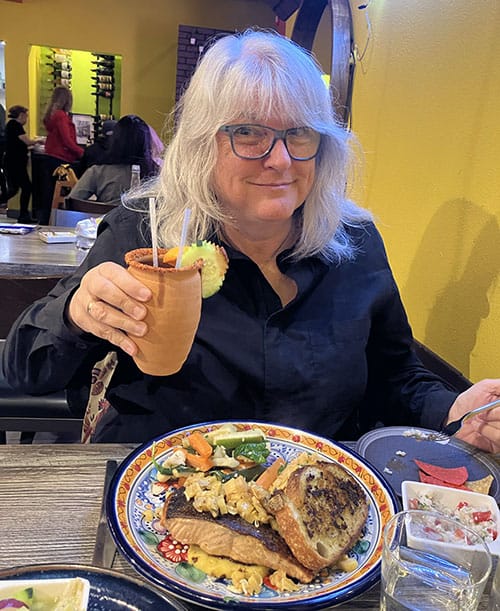
When I catch myself daydreaming about moving to the country or some small town (ah, the quiet), I shake myself.
“C’mon, Woody. How can you give up a place like San Francisco where you can have a beverage with a different interesting person in a different interesting place every day indefinitely?”
Help a city boy out; let me know when you’re free. And kick in to the sociability fund if you’re up for that.
Sources
The great Jack Tillmany is always the go-to source on San Francisco theatres and the dedicated Bill Counter has created an excellent online encyclopedia on the subject. Check out Bill’s thorough Telenews page.
Dennis P. Kelly, “When the Movies Played Downtown: The Exhibition System of the San Francisco Theater Row, 1945–1970,” Journal of Film and Video, 54.2—3, Summer/Fall 2002, pgs. 71–89.
Ralph Craib, “No More Telenews,” San Francisco Chronicle, August 14, 1967, pg. 3.

